Sublimation Printing
Sublimation printing started as a fun creative outlet and quickly turned into my business venture. I loved turning blank shirts, mugs, and décor into custom designs with vibrant color.
The process is simple, affordable, and long-lasting, making it perfect for small business growth. What began as a hobby became a rewarding way to create and earn.
Quick Summary:- Sublimation printing uses heat to transfer dye-based designs onto polyester or coated materials for vibrant, lasting results.
- Startup costs range from $300 for basic setups to $3,000+ for pro gear, with printers like Epson models starting at $500.
- The industry is growing, valued at about $15-16 billion in 2025, with a 10-11% annual increase through 2030.
- It’s flexible for hobbies or side hustles, but watch for challenges like ink clogs or material limits.
What Is Sublimation Printing?
Sublimation printing is a way to put designs onto stuff like mugs, shirts, or tumblers. It works by printing your image on special paper with dye-based ink, then using heat and pressure to turn that ink into gas. The gas bonds right into the material, so the colors stay bright and won’t crack or peel over time.
This method shines on polyester fabrics or coated hard goods, but it won’t stick to untreated cotton or wood. It’s different from screen printing because it’s digital and handles full-color photos easily.
Why It Makes a Solid Creative Outlet
If you’re into designing or crafting, sublimation lets you experiment without huge commitments. You can tweak graphics in free tools like Canva, print small batches, and see results fast. It’s satisfying to turn a sketch into something usable, like custom keychains or pillows.
People often start with personal projects, like family gifts, and build from there. The process encourages playing with colors and patterns, since the output is so crisp. Just keep sessions short to avoid burnout, maybe 1-2 hours a day.
Gear You Need and Rough Costs
Starting doesn’t have to break the bank, but pick quality to skip headaches later. Here’s a breakdown of basics:
| Item | Description | Approximate Cost |
|---|---|---|
| Sublimation Printer | Converts ink for transfers; Epson F170 is a beginner pick. | $300–$500 |
| Heat Press | Applies heat/pressure; 15×15 inch for versatility. | $200–$400 |
| Sublimation Ink | Special dye ink; comes in kits for your printer. | $50–$100 per set |
| Transfer Paper | Coated sheets for printing designs. | $20–$50 per pack |
| Blanks (e.g., mugs, shirts) | Items to print on; buy in bulk. | $1–$5 each |
| Total Starter Setup | $600–$1,500 |
Costs vary by brand, but factor in $100-200 yearly for supplies. Rent space if home setup’s tight.
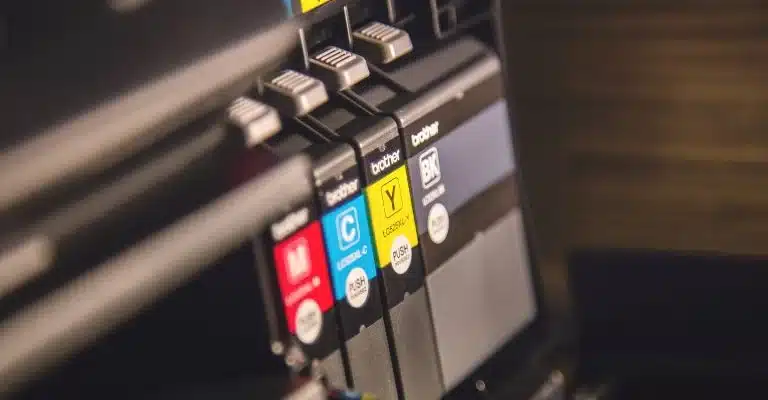
Steps to Turn It Into a Business Venture
Ready to sell? Here’s a straightforward path.
- Learn the Basics: Practice on cheap blanks. Watch free YouTube tutorials for your printer model. Aim for 10-20 test runs.
- Source Designs: Use royalty-free sites or make your own. Focus on niches like pet lovers or local sports.
- Set Up Shop: List on Etsy or Facebook Marketplace. Price items at 2-3x your costs to cover time.
- Market Simply: Share photos on Instagram. Offer bundles, like mug + coaster sets, to boost sales.
- Scale Smart: Track what sells with a spreadsheet. Add tools like a mug press once you’re moving 10+ items a week.
Expect 3-6 months to see steady orders if you post consistently.
Practical Tips for Day-to-Day
- Design Smart: Mirror images before printing, and use 300 DPI for sharp results.
- Prep Right: Clean blanks with alcohol to avoid smudges. Press at 400°F for 45-60 seconds, depending on the item.
- Go Green: Reuse scrap paper as protectors. Opt for eco inks if sustainability matters to your crowd.
- Time Savers: Batch print designs weekly. Store extras in airtight bins to keep colors popping.
Market Snapshot 2025–2030
Dye-sublimation grows from $15.2B in 2025 to $25.5B by 2030. U.S. custom T-shirts reach $7.15B this year.
Finding Products and Supplies:
Getting started in sublimation is easier when you have the right gear.
Essential supplies include:
- Sublimation printer: Popular choices are Epson or Sawgrass models, depending on your budget and needs.
- Sublimation ink: Always use inks made for your printer to ensure bright, long-lasting colors.
- Transfer paper: High-quality sublimation paper keeps designs sharp during the transfer.
- Blanks: Choose polyester-coated items or fabrics with high polyester content, like t-shirts, mugs, phone cases, and mouse pads.
- Heat press: This tool is crucial for transferring your prints onto products with consistent heat and pressure.
💡 Tip: Many online stores sell starter bundles that include a printer, inks, and a heat press. Using reliable supplies from the start ensures your prints look vibrant and professional.
Comparing with Other Printing Methods:
When considering sublimation printing, comparing it with other popular printing methods is helpful. This comparison can help you understand the unique benefits and limitations of each method, allowing you to make an informed decision based on your specific needs.
Sublimation Printing vs. Screen Printing
Sublimation Printing:
- Best for: Polyester fabrics, polymer-coated items
- Process: Transfers dye into the material using heat
- Color Range: Unlimited, with smooth gradients
- Durability: Very high, no fading or cracking
- Setup Time: Quick, suitable for small runs
- Cost: Moderate, with initial investment in equipment
- Best for: Various fabrics (cotton, blends), large flat surfaces
- Process: Uses stencils to apply layers of ink
- Color Range: Limited by number of screens, solid colors
- Durability: High, but can crack over time
- Setup Time: Lengthy, suitable for large runs
- Cost: Low per unit for large runs, high setup costs
Sublimation Printing vs. Heat Transfer
Sublimation Printing:
- Best for: Polyester fabrics, polymer-coated items
- Process: Transfers dye into the material using heat
- Finish: Soft, part of the fabric or material
- Durability: Very high, no peeling or cracking
Heat Transfer:
- Best for: Various fabrics (cotton, polyester, blends)
- Process: Applies a printed image onto the surface of the material using heat
- Finish: Can be thick and less breathable
- Durability: Moderate, may peel or crack over time
Sublimation Printing vs. Direct-to-Garment (DTG) Printing
Sublimation Printing:
- Best for: Polyester fabrics, polymer-coated items
- Color Range: Unlimited, with vibrant, high-quality prints
- Fabric Feel: Ink becomes part of the fabric, with no texture difference
- Durability: Very high, excellent for long-term use
- Best for: Cotton fabrics, dark-colored garments
- Color Range: Wide range, suitable for detailed designs
- Fabric Feel: Ink sits on the fabric surface and can be felt
- Durability: High, but may fade slightly over time
Summary Table
| Feature | Sublimation Printing | Screen Printing | Heat Transfer | DTG Printing |
|---|---|---|---|---|
| Best for | Polyester, polymer-coated items | Various fabrics, large surfaces | Various fabrics | Cotton fabrics, dark garments |
| Process | Heat transfers dye into material | Stencils apply layers of ink | Image applied onto surface with heat | Prints ink directly onto fabric |
| Color Range | Unlimited, smooth gradients | Limited by screens, solid colors | Wide range | Wide range, detailed designs |
| Durability | Very high, no fading or cracking | High, can crack over time | Moderate, may peel or crack | High, may fade slightly |
| Setup Time | Quick, good for small runs | Lengthy, good for large runs | Quick | Quick |
| Cost | Moderate initial investment | Low per unit for large runs | Moderate | High initial investment |
| Fabric Feel | No texture difference | Can be felt on fabric surface | Can be thick and less breathable | Can be felt on fabric surface |
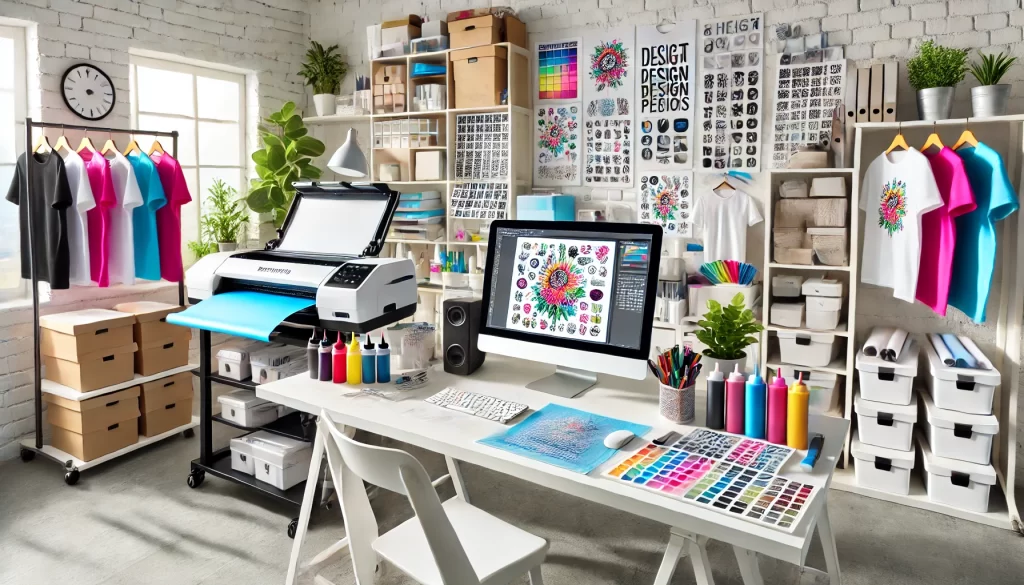
Buying and Pricing Information:
When you’re ready to invest in sublimation printing, understanding the costs involved and where to purchase your equipment and supplies is crucial. Here’s a breakdown of what to expect in terms of pricing and where to find the best deals.
Equipment Costs
- Sublimation Printers
- Entry-Level Printers: $200 – $500
- Ideal for hobbyists and small businesses.
- Examples: Sawgrass SG500, Epson EcoTank (converted for sublimation).
- Professional Printers: $600 – $2,000+
- Suitable for larger businesses and high-volume printing.
- Examples: Sawgrass SG1000, Epson SureColor series.
- Entry-Level Printers: $200 – $500
- Heat Presses
- Small Heat Presses: $100 – $300
- Suitable for small items like mugs and phone cases.
- Examples: Cricut EasyPress, Vevor heat press.
- Large Heat Presses: $300 – $1,500+
- It is ideal for t-shirts and larger items.
- Examples: PowerPress Industrial, Hix SwingMan.
- Small Heat Presses: $100 – $300
- Other Essentials
- Sublimation Ink Sets: $50 – $200
- Prices vary based on brand and quality.
- Sublimation Paper: $10 – $50 per pack
- High-quality paper ensures better prints.
- Blanks (Items to Print On): $1 – $20+ each
- Cost depends on the type and size of the item.
- Sublimation Ink Sets: $50 – $200
Where to Buy
- Online Retailers
- Amazon
- Wide selection of printers, heat presses, inks, and blanks.
- eBay
- Good for finding deals on both new and used equipment.
- Sublimation-Specific Stores
- Examples: Heat Press Nation, Coastal Business Supplies.
- These stores often offer bundles and expert support.
- Amazon
- Local Suppliers
- Office Supply Stores
- Some carry basic sublimation equipment and supplies.
- Specialty Craft Stores
- Can be a good source for blanks and smaller equipment.
- Office Supply Stores
- Direct from Manufacturers
- Sawgrass, Epson, etc.
- Buying directly can sometimes offer better warranties and customer support.
- Sawgrass, Epson, etc.
Cost Breakdown Table
| Equipment Type | Price Range | Examples |
|---|---|---|
| Entry-Level Printers | $200 – $500 | Sawgrass SG500, Epson EcoTank |
| Professional Printers | $600 – $2,000+ | Sawgrass SG1000, Epson SureColor |
| Small Heat Presses | $100 – $300 | Cricut EasyPress, Vevor |
| Large Heat Presses | $300 – $1,500+ | PowerPress Industrial, Hix SwingMan |
| Sublimation Ink Sets | $50 – $200 | Various brands |
| Sublimation Paper | $10 – $50 per pack | High-quality sublimation paper |
| Blanks (Items to Print) | $1 – $20+ each | Mugs, t-shirts, phone cases, mouse pads |
Tips for Saving Money
- Bundles and Starter Kits: Look for bundles that include a printer, heat press, inks, and paper. These can be more cost-effective than buying items separately.
- Used Equipment: Check platforms like eBay or local classifieds for gently used equipment at a lower price.
- Wholesale Purchases: Buying blanks and supplies in bulk can reduce costs significantly.
- Discounts and Sales: Look for sales on major shopping holidays or subscribe to newsletters from sublimation supply stores for discounts.
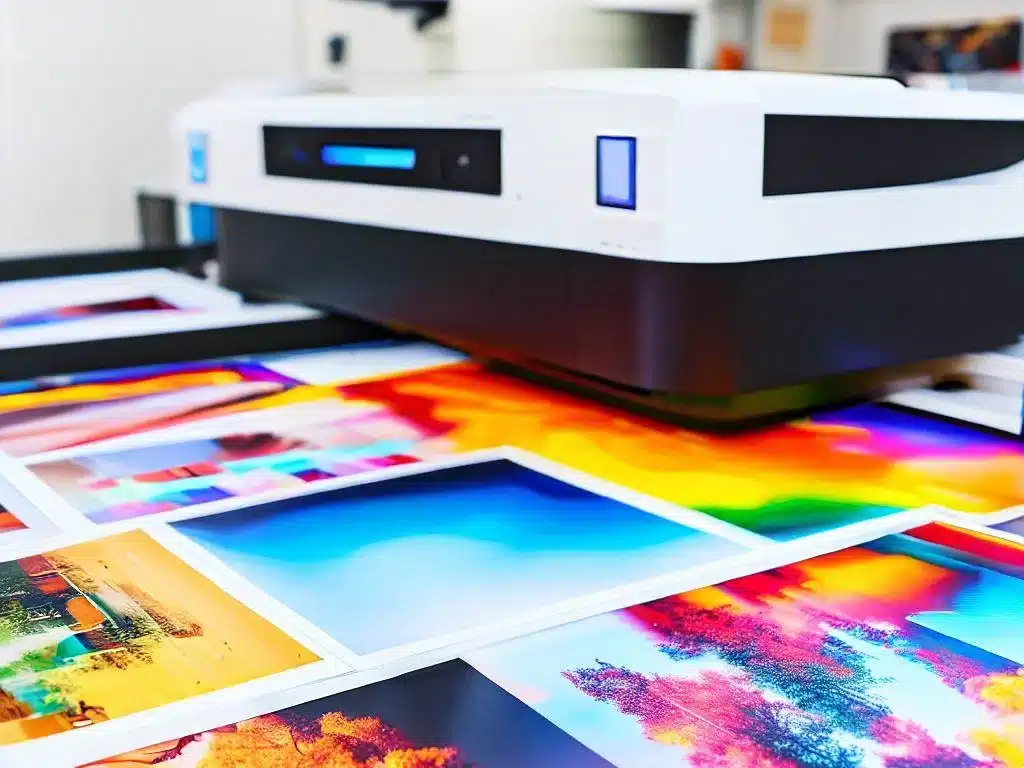
Exploring Applications and Uses:
Here are some popular uses and creative ideas to help you get the most out of your sublimation printing setup.
Popular Applications
- Custom Apparel
- T-Shirts: Design personalized t-shirts with vibrant, all-over prints.
- Sportswear: Create durable and colorful jerseys, shorts, and activewear.
- Hats and Caps: Print logos, graphics, and text on hats for a custom look.
- Home Décor
- Pillows and Cushions: Add unique designs to home textiles.
- Blankets: Create custom-printed blankets with personal photos or patterns.
- Wall Art: Print high-quality images on canvas or metal for stunning wall decor.
- Personal Accessories
- Phone Cases: Design protective and stylish phone cases.
- Mugs: Personalize coffee mugs with photos, logos, or artwork.
- Tote Bags: Create custom tote bags for personal use or as promotional items.
- Promotional Items
- Keychains: Print small promotional keychains for branding.
- Mouse Pads: Design custom mouse pads for giveaways or office use.
- Coasters: Create branded coasters for events or business promotions.
Creative Ideas
- Photo Gifts
- Family Photos: Print cherished photos on items like mugs, pillows, and blankets.
- Pet Portraits: Create custom pet portraits on t-shirts, canvases, and more.
- Custom Merchandise
- Artist Merchandise: Turn artwork into sellable merchandise such as prints, apparel, and accessories.
- Band Merch: Design and print custom merchandise for bands and musicians.
- Event Memorabilia
- Weddings: Create personalized wedding favors like photo frames, coasters, and bags.
- Graduations: Design custom t-shirts, banners, and gifts for graduation parties.
- Corporate Branding
- Employee Gifts: Print custom items for employee recognition or corporate gifts.
- Office Supplies: Design branded office supplies like notebooks, pens, and lanyards.
Business and Commercial Use of Sublimation Printing
If you’re thinking about turning sublimation into more than just a hobby, here’s the good news: it’s a low-cost way to start a profitable business with endless product options.
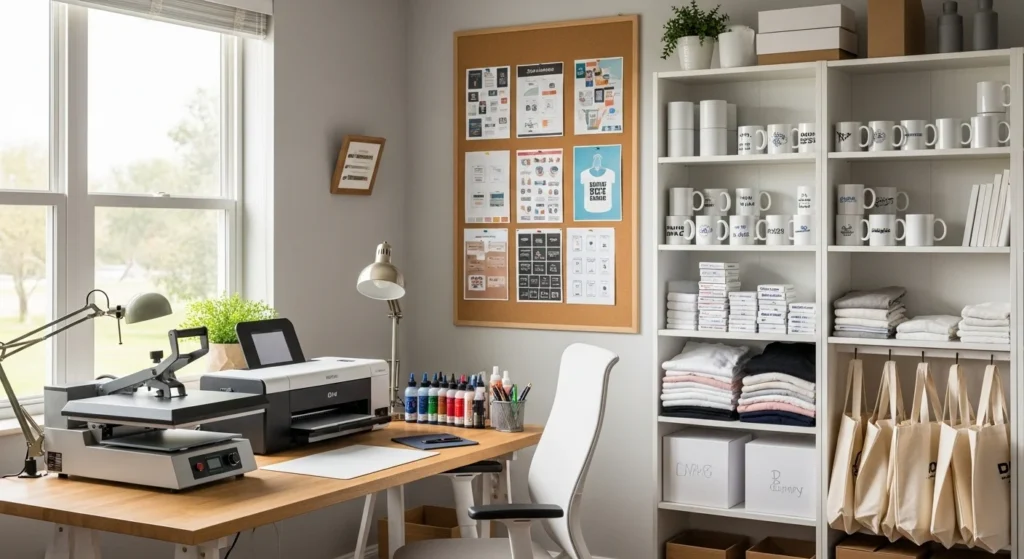
Starting a Sublimation Printing Business
The best way to set yourself up is to treat it like a real business from the start.
Market research matters
- Figure out who you’re selling to (age, style, buying habits).
- Check out competitors to see what they do well and where they fall short.
- Pick a niche, like sports teams, wedding gifts, or branded uniforms, so you don’t blend in with everyone else.
Build a solid plan
- Decide if you want to sell direct to customers, wholesale, or both.
- Budget for equipment, blanks, inks, and marketing, and know your numbers.
- Set prices that cover materials and overhead while leaving room for profit.
Setting Up Your Workspace
Even a small room works if you stay organized.
- Keep your printer, heat press, and blanks in easy reach.
- Store inks, paper, and supplies in a way that saves time.
- Make sure you have good airflow since heat presses run hot.
Why Sublimation is Profitable
Low startup cost: Compared to screen printing or embroidery, sublimation gear is more affordable, which makes it great for new entrepreneurs.
High margins: People pay more for personalized items. A $3 mug blank, for example, can easily sell for $15–20 once customized.
Endless products: From shirts and mugs to signage and home décor, you can sell across multiple markets without buying different machines.
| Method | Startup Cost | Best For | Limitations |
|---|
| Sublimation | Low | Apparel, mugs, décor | Needs polyester or coated blanks |
| Screen Printing | Medium–High | Bulk apparel orders | Time-consuming setup, messy inks |
| Embroidery | High | Premium logos, uniforms | Limited to fabrics, slower output |
Marketing Tips That Work
Get seen online
- Launch a simple website with photos, testimonials, and an easy way to order.
- Post regularly on Instagram, Pinterest, or TikTok to showcase your work.
- Try marketplaces like Etsy or Amazon Handmade if you want built-in traffic.
Build local connections
- Partner with schools, gyms, or small businesses to supply uniforms and swag.
- Show up at craft fairs, markets, or trade shows to meet customers in person.
- Team up with influencers or bloggers who can feature your designs.
Keep customers happy
- Offer customization options and listen to what people ask for.
- Deliver on time, answer questions fast, and follow up for reviews.
- Use feedback to improve quality and expand your product line.
Common Issues and Solutions
- Faded Prints
- Cause: Insufficient heat or pressure, incorrect time settings.
- Solution: Ensure your heat press settings match your specific materials’ recommended temperature, pressure, and time.
- Ghosting or Blurry Images
- Cause: Movement during the transfer process.
- Solution: Use heat-resistant tape to secure the transfer paper and ensure the item remains stationary during pressing.
- Colors Not Matching the Design
- Cause: Incorrect color profiles or ink settings.
- Solution: Use ICC color profiles tailored to your printer and ink combination. Check your design software and printer settings.
- Lines or Streaks in Print
- Cause: Dirty or clogged print heads.
- Solution: Regularly clean your printer’s print heads and perform maintenance checks.
- Paper Sticking to the Substrate
- Cause: Excessive pressure or incorrect paper type.
- Solution: Adjust the pressure settings on your heat press and ensure you are using the correct sublimation paper.
🚀 Elevate Your Printing Game
Professional printing resources for stunning results
FAQs
Regularly troubleshooting and maintaining your sublimation equipment can help prevent printing problems and ensure its longer lifespan. Following these steps, you can create high-quality sublimation prints and keep your equipment in good condition.

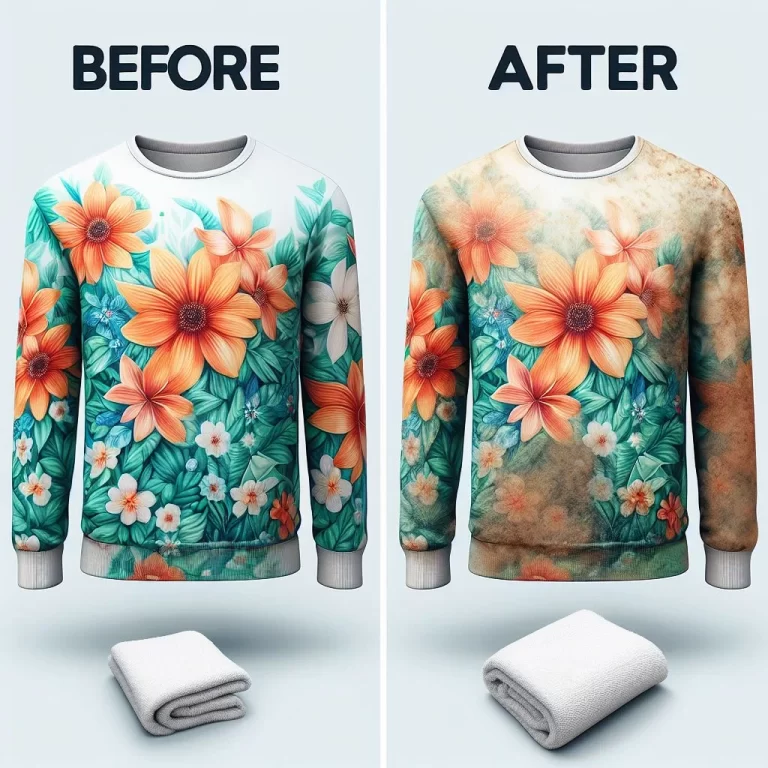
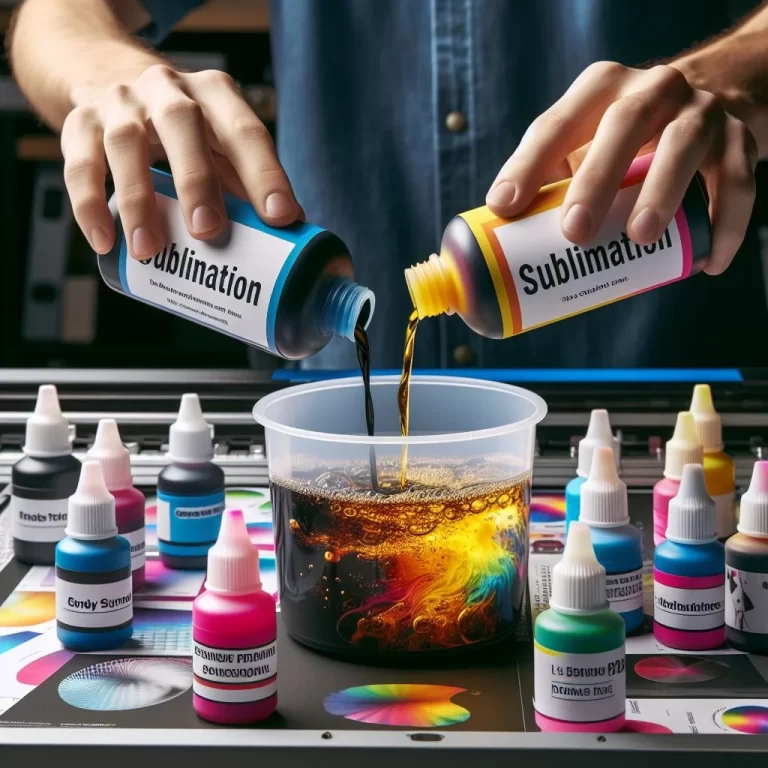


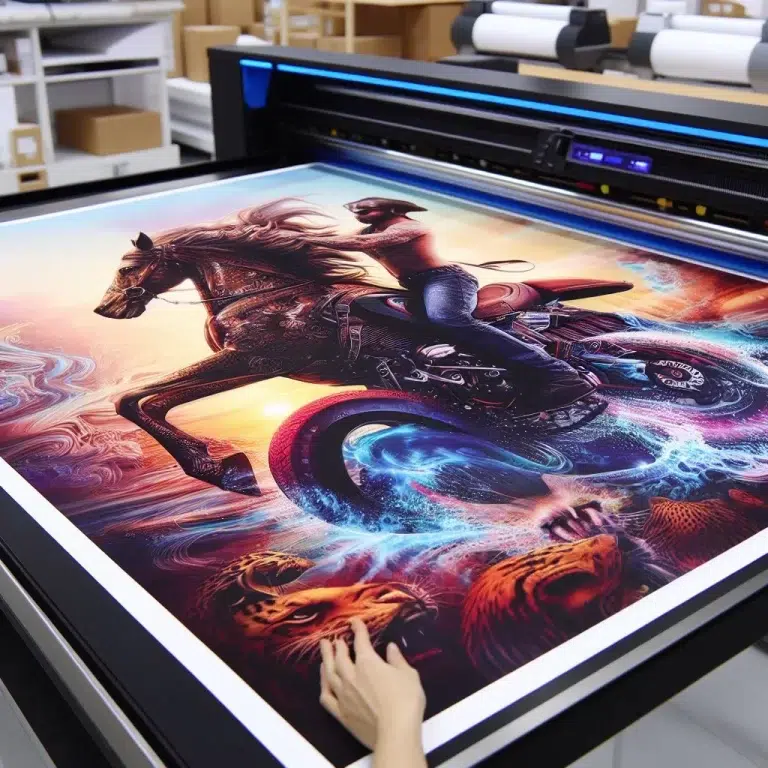
One Comment